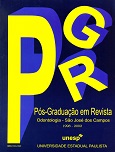Análise comparativa através da microscopia eletrônica de varredura da superfície da porcelana vitrificada e tratada por conjuntos de polimento intra-oral
DOI:
https://doi.org/10.14295/bds.1999.v2i2.648Abstract
Os materiais cerâmicos são largamente utilizados na odontologia restauradora pois preenchem três critérios principais: resistência, adaptação e estética. Uma singularidade é realizar o ajuste oclusal nas restaurações cerâmicas após a cimentação, porém esses ajustes removem a vitrificação o que resulta numa superfície rugosa e isso provoca uma abrasão acentuada no dente antagonista (Monasky & Taylor 1971)17, porém Jacobi et al.13 constataram que a porcelana vitrificada é mais abrasiva do que a porcelana polida. O propósito deste estudo foi comparar a eficiência de sete combinações para polimento de uma superfície de porcelana (Corologic), após receber a vitrificação convencional, popularmente denominada de glaze . Amostras com 10mm de diâmetro e 2mm de largura foram abrasionadas com uma broca de diamante e as diferentes combinações de polimento foram empregadas. Clinicamente verificou-se que todos os sistemas utilizados proporcionaram uma superfície brilhante, mas a microscopia eletrônica de varredura revelou que os conjuntos não são capazes de remover as ranhuras da superfície abrasionada. A amostra que recebeu vitrificação convencional, apresentou uma superfície mais homogênea do que qualquer sistema de polimento. Os sistemas de polimento utilizados nesse estudo, não conseguiram reproduzir a superfície original vitrificada.Downloads
Downloads
Published
How to Cite
Issue
Section
License
Brazilian Dental Science uses the Creative Commons (CC-BY 4.0) license, thus preserving the integrity of articles in an open access environment. The journal allows the author to retain publishing rights without restrictions.
=================




























